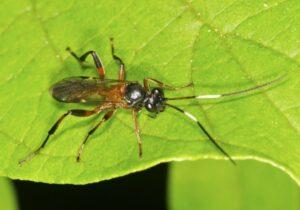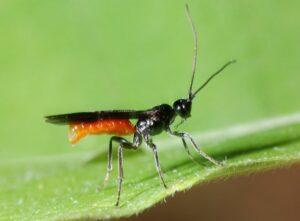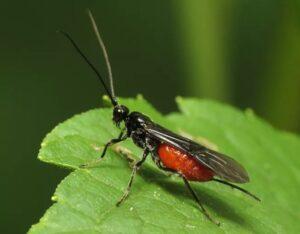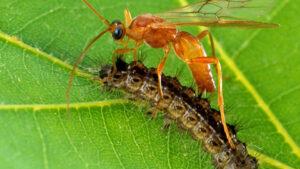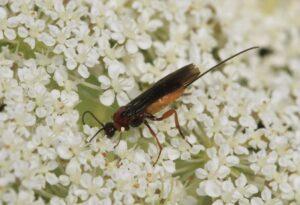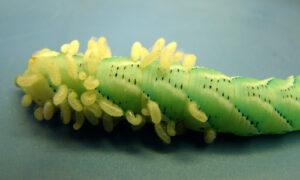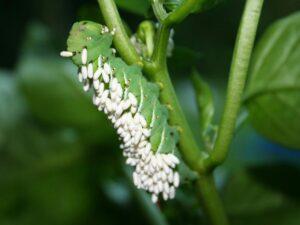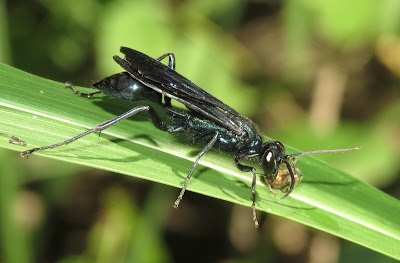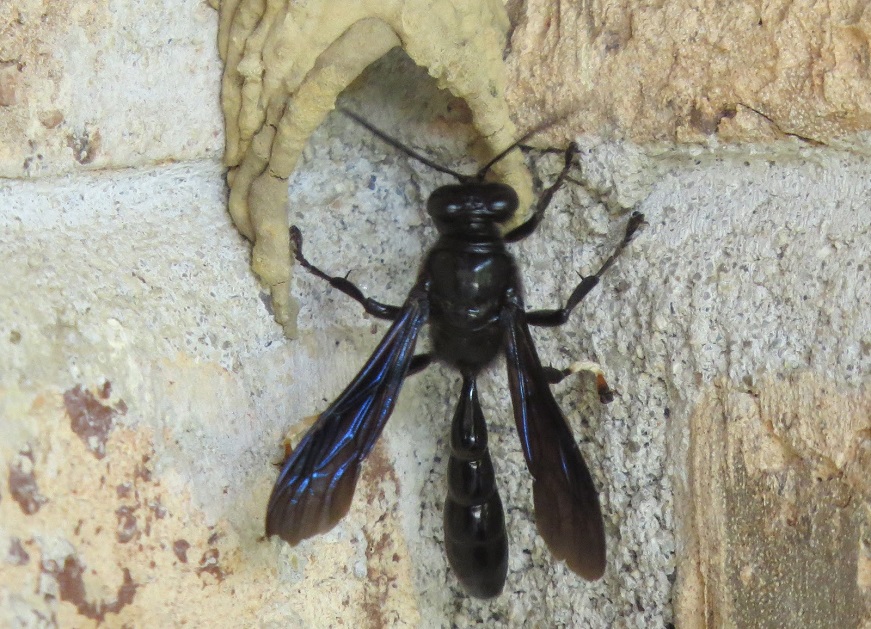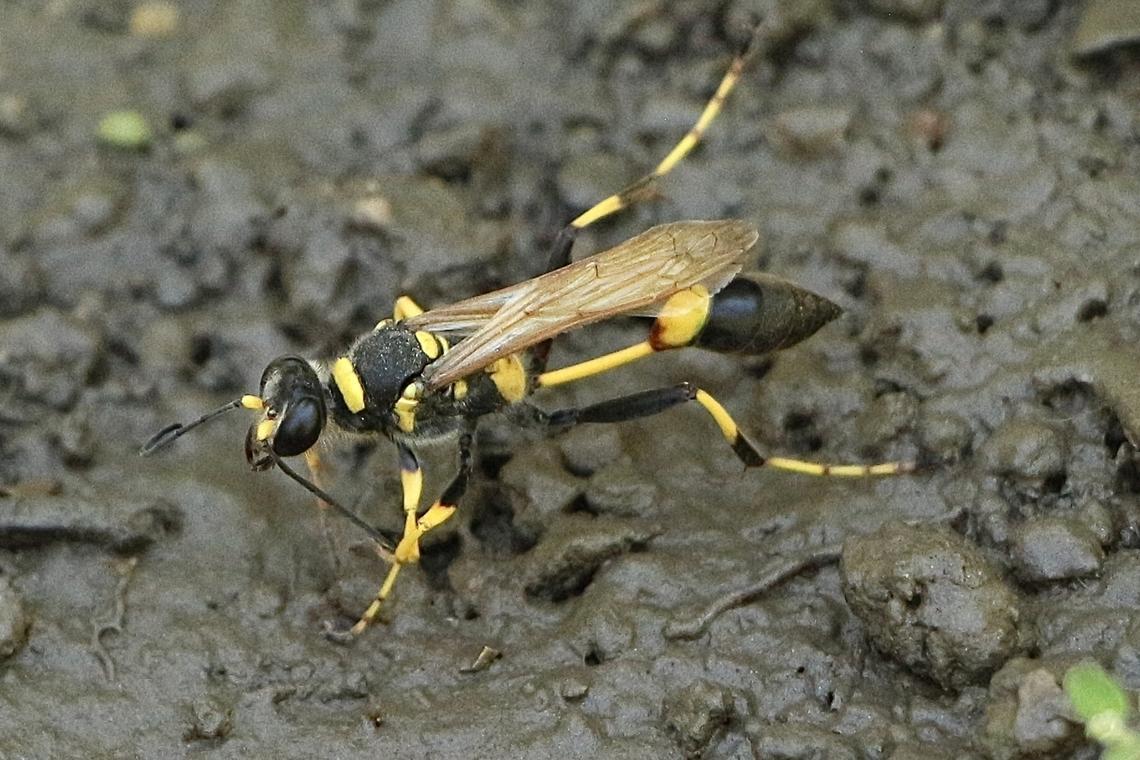Braconid Wasps (Braconidae)
Updated on
17/11/2022Braconidae is the second-largest family in the Hymenoptera order (that includes bees, wasps, ants, and sawflies), consisting of over 17,000 recognized species of parasitoid wasps, commonly known as braconid wasps. Many species are yet to be identified, with multiple studies suggesting the total number to be almost 50,000.
They are often considered beneficial insects as they parasitize certain pests like aphids and certain caterpillars. However, for the same reason, they could themselves become pests in a butterfly garden.
Scientific Classifications
- Class:Insecta
- Order:Hymenoptera
- Superfamily:Ichneumonoidea
- Family:Braconidae
Subfamilies
The Braconidae family is divided into over 50 subfamilies, which are further sorted into over 1,000 genera. Here are the subfamilies:
- Agathidinae
- Acampsohelconinae
- Apozyginae
- Alysiinae
- Aphidiinae
- Amicrocentrinae
- Braconinae
- Blacinae
- Brachistinae
- Betylobraconinae
- Cheloninae
- Cenocoeliinae
- Cardiochilinae
- Charmontinae
- Doryctinae (doryctine wasps)
- Dirrhopinae
- Ecnomiinae
- Exothecinae
- Euphorinae
- Histeromerinae
- Hormiinae
- Helconinae
- Homolobinae
- Ichneutinae
- Khoikhoiiinae
- Lysiterminae
- Macrocentrinae
- Maxfischeriinae
- Masoninae
- Meteorideinae
- Miracinae
- Mesostoinae
- Mendesellinae
- Microtypinae
- Microgastrinae
- Meteorinae
- Neoneurinae
- Orgilinae
- Opiinae
- Pselaphaninae
- Pambolinae
- Rogadinae
- Rhyssalinae
- Rhysipolinae
- Sigalphinae
- Trachypetinae
- Telengaiinae
- Vaepellinae
- Xiphozelinae
- Ypsistocerinae
- †Protorhyssalinae
- †Seneciobraconinae
What Do They Look Like
These wasps are about 0.5 inch (1.2 cm) long, with a relatively narrow midsection.
Most species are black or dark brown, but some may have more striking colors and patterns like red or orange abdomens.
Adults have a small head that somewhat resembles that of an ant, with a pair of long threadlike antennae with 16 or more segments.
Unlike members of the superfamily Ichneumonoidea, which have two recurrent veins, Braconid wasps have one or none. Their two pairs of clear wings are veined, with most species having a dark spot on the forewings.
Adult females have a long black ovipositor – tube-like organ used for laying eggs – at the rear end of their body.
Distribution: Throughout the world
Habitat: Anywhere with enough warmth and humidity
Do They Bite/Sting: No; Not considered dangerous to humans
Lifespan: A few days to weeks, depending on the species
Predators: Dragonfly, mantis, centipede, birds
Behavior and Characteristics
Diet and Feeding
Adults mainly feed on flower pollen and nectar. The fast-moving wasps prefer small flowers, like those from the carrot and mustard families.
Life Cycle
1. Egg Stage
Adult females use their ovipositor to lay eggs just under the skin of their host instead of building a regular nest. One adult female can lay up to 200 eggs in a single summer. The eggs are not visible to bare eyes, as they remain inside the host’s body until they hatch.
Hosts
With thousands of species spread all over the world, numerous insects act as hosts to these wasps. Some also use some species of ‘true bugs’ from the Heteroptera group.
Cotesia congregata attacks tomato hornworms and tobacco hornworms – some serious pests for vegetable gardens.
Cotesia glomerata mainly uses the large white, and small white butterflies as their host.
Other insects commonly chosen as hosts by different species of these wasps include Asian corn borer, African sugarcane borer, plain tiger butterfly, American serpentine leafminer, and the Caribbean fruit fly.
Some species belonging to Mesostoinae and Doryctinae are parasitic on certain plants, forming galls on their host.
2. Larval Stage
The eggs then hatch, and the larvae continue to live off the host, weakening it gradually. The white or yellow larvae resemble maggots, and they can be seen only when they mature and chew their way out of the host’s body.
3. Pupal Stage
Once outside, they spin their cocoons on the host’s body, appearing
as rice-like clusters that are often mistaken for their eggs. The host would be dead or almost dead when the wasps are ready to come out of their cocoons.
Source
thoughtco.com, bugguide.net, genent.cals.ncsu.edu, treehugger.com, cdn.theatlantic.com, entnemdept.ufl.edu, upload.wikimedia.org, ukrbin.com




